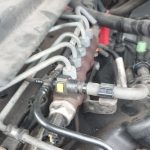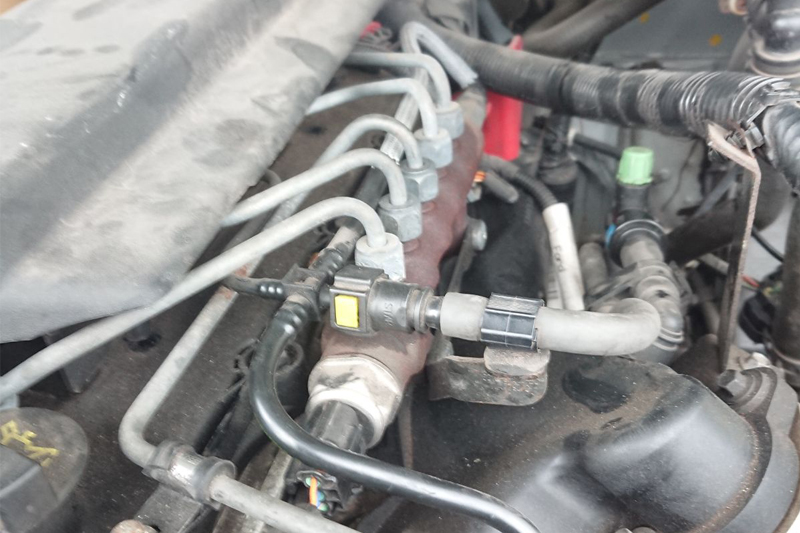Josh Jones recounts a recent run-in with a temperamental Land Rover that was in need of revival. Land Rover defender 2007 MY 2.4 engine code 244DT 90KW (122 BHP).
This poor Landy was a non-runner, and had been laid up in a warehouse for some six months prior to me having a look at it. The owner had noticed hesitation from the engine during general driving until finally it failed to start one morning. After several unsuccessful attempts by the confused driver to revive the vehicle, it was left with the local garage for them to carry out the required investigations.
Unfortunately, the technicians were unable to make progress, so the car was placed in a warehouse that was at the disposal of the owner. By the time it had made its way to me, it was a bit dusty under the hood as you may imagine, and the battery had lost its battle for life as well.
Once I had given it some electrical assistance in order to begin diagnosis, I learned that the engine cranked over fine and sounded mechanically intact. However, it did not fire at all, even with extended cranking periods. When I used a scan tool to access engine control unit DTCs, none were present. Even after several cranking periods (I was aware that the time with no power supply may have influenced fault memory), no codes were being triggered.
I reached for my scope straight away. I wanted to evaluate fuel pressure during cranking, as it is obviously a prerequisite for the engine going – and seeing as my scan tool was communicating with the ECM and I had an EML present with the ignition on, I wanted to see if there was any fuel pressure being generated at all.
Back probing the signal wire of the rail pressure sensor to obtain a reading (after confirming good reference voltage and ground at the other pins) was a quick and easily accessible way to gain information about the performance of the fuel system during cranking, and it confirmed once again that the system was active.
With the ignition key in position two, the pressure signal voltage from the FRP sensor was roughly 0.8V and did not change at all as the engine started to rotate under the power of the starter. I now wanted to find out if the high pressure fuel pump had access to free flowing fuel to pressurise in the first place. I decoupled the supply pipe at a union near the pump and could see straight away that the line was dry, so after confirming that this model was not fitted with an electric lift pump, I reconnected the system with a hand primer bulb in line and attempted to prime the system to see if fuel was available.
After a few pumps, fuel began to flow through the system, so I decided to prime the system through to the rail and then have another attempt at cranking. To my complete surprise, after a few rotations, the engine began to fire and then sat there idling nicely. I noticed that there seemed to be a lot of air bubbles running through the hand primer, so I thought it appropriate to make sure that the supply line from the tank to the pump was air tight, as this may have caused the line to dry up over time. I did this by dropping the fuel tank down and disconnecting the supply line union at the tank module, and doing the same at the fuel pump.
I then blocked off one end and attached a vac gauge/pump to the other. When a depression was induced in the line, there was a slow loss of vacuum, so I checked the line thoroughly and found that chafing had caused a tiny pin hole leak near to the fuel cooler unit on the chassis leg. I repaired it and then reassembled and primed the system after a second leak check with good results. This explained the non-start situation, but I was still unsure that this would have been the original issue. The vehicle was left overnight at that point to ensure good starting after an idle period. It started every time on the button following the fuel line repair.
Still not quite believing that this could have been the simple fault that kept this car off the road for over six months, I wanted to confirm the integrity of the rest of the high pressure fuel system, in case I had missed any symptoms that were witnessed by the owner but not by me.
I have experienced several issues in the past with systems that use suction control valves to meter the amount of fuel that the high pressure fuel pump can draw from the tank at any particular time (please see historic issues of PMM for some very useful information on the way these units work). These days I don’t like to leave them unevaluated as they can cause the symptoms described by the owner of this particular vehicle quite easily, yet they seldom trigger any fault codes. From the test I am about to describe, I hoped to get a good basic picture of the system’s abilty to generate fuel pressure, as well as get some great reference waveforms for any problems due to SCV valve faults in the future.
I used a simple trace of the fuel rail pressure signal three different ways to get an idea of the pump’s ability to build pressure during cranking. The first (see below) was taken with the SCV valve connected as normal, to show the pressure build up in the rail as the engine got ready to start.
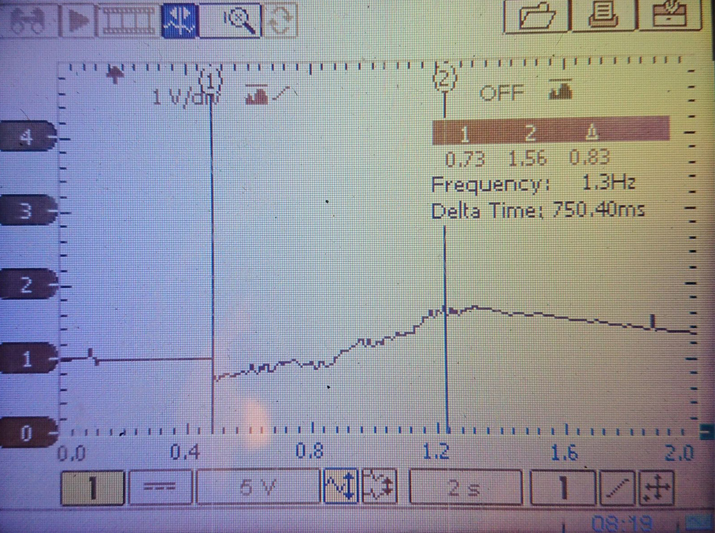
It shows that the rail pressure built normally and reached at least 250-300 bar (converting the shown voltage to pressure – as the ECU does) within a second or so of cranking time. This is easily enough for the ECU to decide to begin fuelling.
To further evaluate the condition of the high pressure pump and the effectiveness of the SCV, I carried out the same test with the suction valve disconnected. The result (see below) was a much bigger rise in pressure during the cranking period.
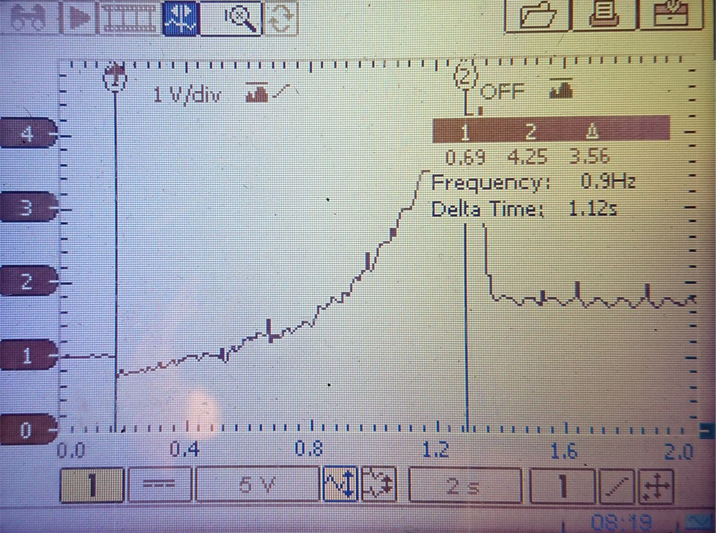
This is because, with the valve disconnected, it was not being commanded to regulate pressure and the mechanical pump has free reign to draw as much fuel as possible to generate flow and, ultimately, pressure. The third test was again to evaluate the effectiveness of the SCV valve. The valve was given a supply and ground to simulate a 100% duty cycle for a short period of time, during which another trace was taken from the FRP sensor with the engine cranking for around a second.
You can see from the image below that the valve was very effective at the other end of its operating range as barely any pressure is produced by the pump when rotated by the engine.
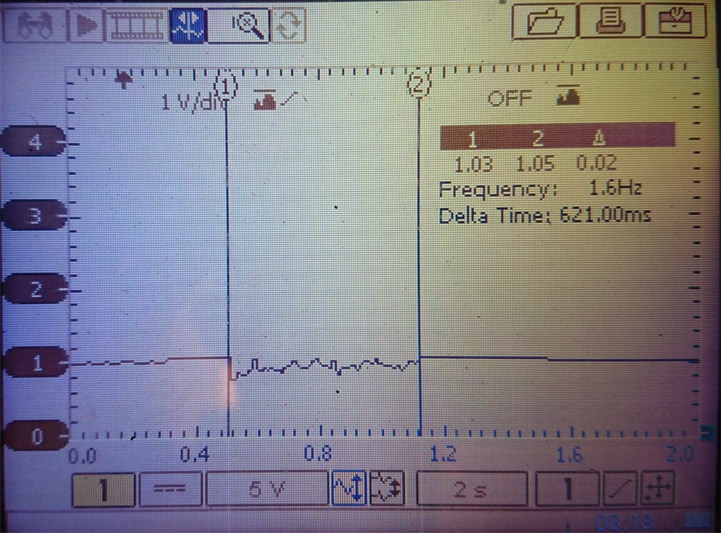
These tests gave me a lot more confidence in the health of the fuel system generally, especially as the second trace shows that a major back leak problem is not present. In the event of a high pressure pump fault being suspected, I will certainly use these tests as a good guide and cannot see how a pump could be condemned without first confirming the basic operation of an SCV, if fitted. Glad I have always read this magazine!

